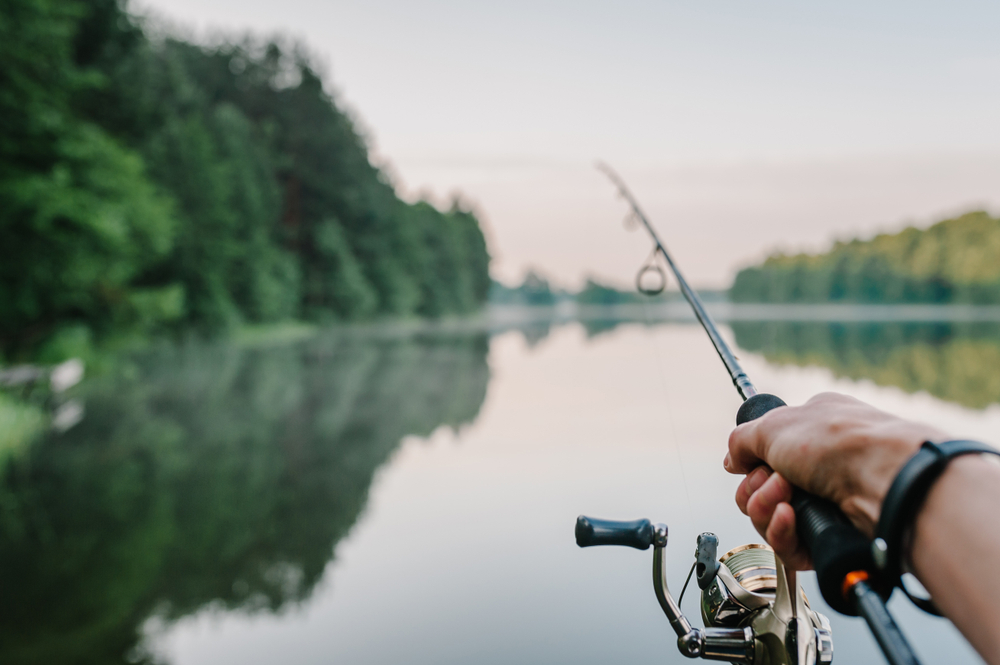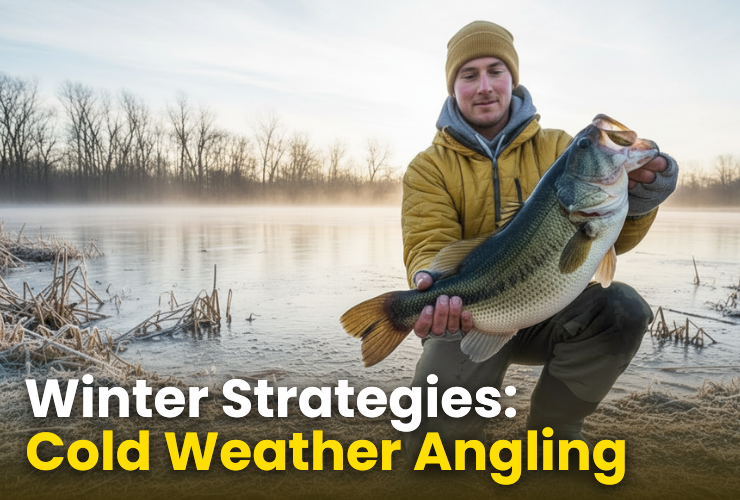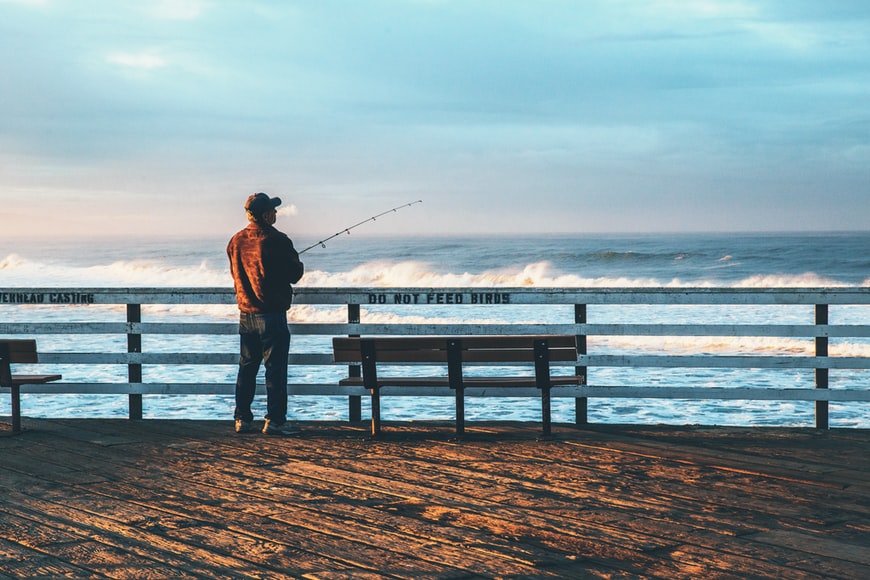10 Tips for Catching Big Bass in Clear Water
10 Tips for Catching Big Bass in Clear Water
Bass fishing can be extremely simple if you just go out for a casual afternoon, toss a lure out, and hope for the best. However, when you’re trying to take your bass fishing seriously, there are a ton of factors that dramatically impact the approach you can realistically take and succeed.
These factors range from the barometric pressure, whether or not storms are in the area, the time of year, and more.
However, one thing you might not think to adjust your strategy for is water clarity.
The fish aren’t stupid or blind. Clear water can make them a lot more difficult to catch. Luckily, we’re going to give you ten proven tips for catching big bass in crystal-clear water.
Newsletter Signup
1: Keep Your Distance
One of the big changes you need to make to your fishing strategy for clear water is to keep your distance. You don’t want to thump your way up to the bank, or run your boat right up to a spot, because the fish will see you regardless of how quiet you are.
A more optimal approach would be to cast into a spot from far away. You’ll need to be fairly accurate with your casting, and you’ll want to have your rod set up properly to get longer casts, but those are things you should have learned within your first few weeks of fishing.
For bank fishermen, we recommend casting from several yards away from the bank in most situations. If you see a nice dock or want to check the boat ramp, stay a solid 15-20 feet away from the bank near those objects, and cast past them. This will keep your presence from being noticed, and you’ll be able to slowly work your lure into the strike zone.
Of course, that makes getting the fish ashore a bit more of a hassle. You’ll need to simultaneously fight the fish and inch your way forward to prevent the fish from getting dragged across the ground, but it’s not a difficult skill to learn.
It’s also recommended to cast from an angle that gets you into a good spot but also keeps your lure in the water longer so you can cover more water with each cast and give stubborn bass a longer window to strike in.
Boat fishermen have it a lot easier. Just pinpoint the spot you want to target and keep your boat out of it. Since you’re on the water, you’ll not only hit your spot, but you’ll have the slightest chance of catching something the entire time you're retrieving the lure.
This is useful for any fishing trip, but you have to stay further away when the water is clear.
2: Watch Your Shadow
It’s not just your physical profile you need to keep out of sight. You also don’t want to cast a giant shadow over the spot you’re fishing in. Practically blocking out the sun suddenly is a good way to tip the bass off that something is up.
This can be a bit more difficult to do because you have to be more mindful of your positioning. Depending on where the sun is in the sky, you might have to reposition to keep from causing too much of a disturbance to the light the fish are used to enjoying in clear water.
Boat fishermen are likely to have the most problems with this because there typically aren’t any natural structures to block your shadow or prevent sunlight from casting one. You’re on the water, and your shadow is going to get cast probably for a good distance away from your boat. Repositioning as the sun changes positions in the sky is the only real solution here.
On the banks, you can focus on casting from a distance at an angle, using natural cover to your advantage, and repositioning as needed.
3: Use Realistic Lure Colors
In clear water, the bass can see the outline of your lure much more effectively. Using oddball lures that look nothing like fish isn’t a great idea, and some of the bright, eye-catching, neon colors that are popular with anglers in muddier water aren’t optimal in this situation. A bass can clearly tell that your bright-pink swimbait is very different from the silver shad, blue-green bluegill, and similar baitfish they’re eating.
You want to try to match the natural color patterns of the animals they’re currently eating. Switch to using your darker, earth-tone lures, and when using brighter options, make sure they match something the bass are eating in that particular body of water.
4: Use Topwater Lures
Topwater lures can be great if you’re mimicking frogs in muddy water, but they really excel in clear water. The bass can clearly see them skipping around on the top of the water, and this sends them into a frenzy.
Not only do you increase your chances of getting some good bass with topwater lures, but you get to experience the famous "gill flare" that bass is known for a lot more often. So, don’t be afraid to spend a little more time experimenting and figuring out the right timing to set the hook. This is a great opportunity.
5: Use Transparent Lures on the Top
This goes with our previous tip. Topwater lures in natural colors will do just fine, but we find that it’s really effective if you switch to translucent lures. This lets the sunlight work its way through the lure in a way that really makes it pop on the surface. This simple switch can produce an irresistible presentation that the bass is sure to strike at.
However, we’re not talking about transparent lures. You want to aim for a lure that is just see-through enough for light to shine through it and dissipate, but you also want to get a color that matches natural bait in the area. Silver is almost always a good choice, but light green and brown can also be useful.
If you want to find the best lure for fishing bass, read our Ultimate Guide To Bass Fishing Lures.
6: Utilize Realistic Profiles
A common misconception about lures is that fish see them exactly as they are. For example, a lot of fishermen use crayfish lures strictly on the bottom with jigs and present them as crayfish, because they think that’s all the lure can do. In reality, the action from the flippers works extremely well on spinners and other fast mid-column rigs, and honestly, any creature bait can be used in the same manner.
This is because of the "profile" a lure presents. Did you know that a swim jig in the right color pattern mimics bluegill? You wouldn’t think that by looking at its floppy skirt and tiny jig head, but it does. This is because that skirt expands and shrinks as you reel it in and pause.
Get to know your lures and what it is they ACTUALLY do under the water. We can’t possibly cover every lure imaginable. The tackle market is ridiculously vast. However, you can Google any specific lure, and we guarantee you’ll find article after article, or YouTube video after YouTube video, describing every aspect of that lure.
We can tell you that stick baits like longer jerk baits that float toward the top of the water column, are some of our favorites. They can realistically mimic a lot of different fish, are relatively cheap, and are proven producers of high-quality bass.
7: Minimize Your Environmental Impact
Imagine this. You’re going to a calm, clear, beautiful lake. There are only slight waves from a gentle breeze, and it’s the perfect day to go fishing. Then, you hop in your boat, and in an excited frenzy, you fly across the water disturbing everything possible. You ruined your own time, and you probably irritated everyone else on the water.
You want to keep your impact on the environment as minimal as possible.
When you get in your boat, opt to use your trolling motor and maintain a low speed until you get where you’re going.
Better yet, try bank fishing for a while. Your boat will create a water disturbance, and while you can learn to avoid that as much as possible, walking the banks can be just as effective. This is especially true when you’re fishing at lakes that are well-maintained and all the best spots are easily accessible by water. If there’s no reason to get the boat out and cause a ruckus, don’t.
8: Be Mindful of Others
While all of us would love to have a great day fishing on a big, secluded, LONELY lake, that is not how it plays out most of the time. Usually, you have to worry about other fishermen and non-fishermen who are just enjoying recreational activities like kayaking, boating, and swimming.
It is your job to be mindful of all those unfortunate problems.
First, you have to consider non-fishermen, because they will scare off the fish. Kids jumping in the lake, everyone splashing around, or people buzzing their watercraft around is not good for your fishing attempt. Luckily, these folks usually stick to certain spots. Just go somewhere far away from them, and you’ll be fine. There is also a safety aspect to this. You don’t want to be throwing sharp fishing hooks into areas that people swim in.
For other anglers, it’s a mixed bag of experiences. You’ll likely bump into other anglers who are experienced, courteous, and overall, respectful of your space. These guys won’t speed by you, cast over your lines, or start making a big disturbance while you’re trying to convince the fish that the big human standing over the water wants nothing to do with them.
However, you will occasionally have to deal with the opposite of that. Whether they’re amateurs who don’t know the etiquette involved in fishing, or they’re just self-centered jerks, you will have to deal with people who buzz past your craft, turn their music up, cast their line right into your area, and worse.
You can try confronting them, but it’s usually better to just find a new spot and make it clear that you don’t approve of their disrespect. Escalating things into arguments on the water doesn’t work out well for anyone.
9: Go Toward Cover
You rarely want to be chucking lures directly in the middle of the lake regardless of what you’re fishing for, but it does sometimes work out. However, with clear water, you really want to focus on fishing in areas that have a natural cover.
This is because fish naturally seek out places to hide from bigger fish, and bass like to go to those places to conceal themselves until it’s time to eat or to find the bait fish hiding there. They typically won’t be swimming around in the middle of a clear lake unless they’re trying to adjust their body temperature, and that’s not the optimal time to target them.
Try to move in closer to the banks, cast near stumps, downed trees, and other pieces of cover, and use lures that let you avoid being snagged.
You can also take advantage of the water’s clarity to find cover that is underneath the water in deeper areas such as trees that broke off and made their way toward the middle. In a situation like that, you can reliably catch bass without having to hug the bank.
10: Utilize a Fishing Forecast App
In clear water, all the factors that affect your fishing experience in your average muddy pond are exponentially more impactful.
This is why you need to head over to BassForecast and get the best fishing forecast app available. You’ll be able to understand the wind patterns, barometric pressure, water temperature, and more before you head out, and you’ll get highly detailed maps identifying hazards you should avoid or take advantage of during your trip to help overcome some of the challenges that come with fishing in clear water.
This is a tip we’d recommend even if you’re not fishing in clear water. There is so much information available that it's well worth your time to try it out.




.jpg)




.png)
.png)